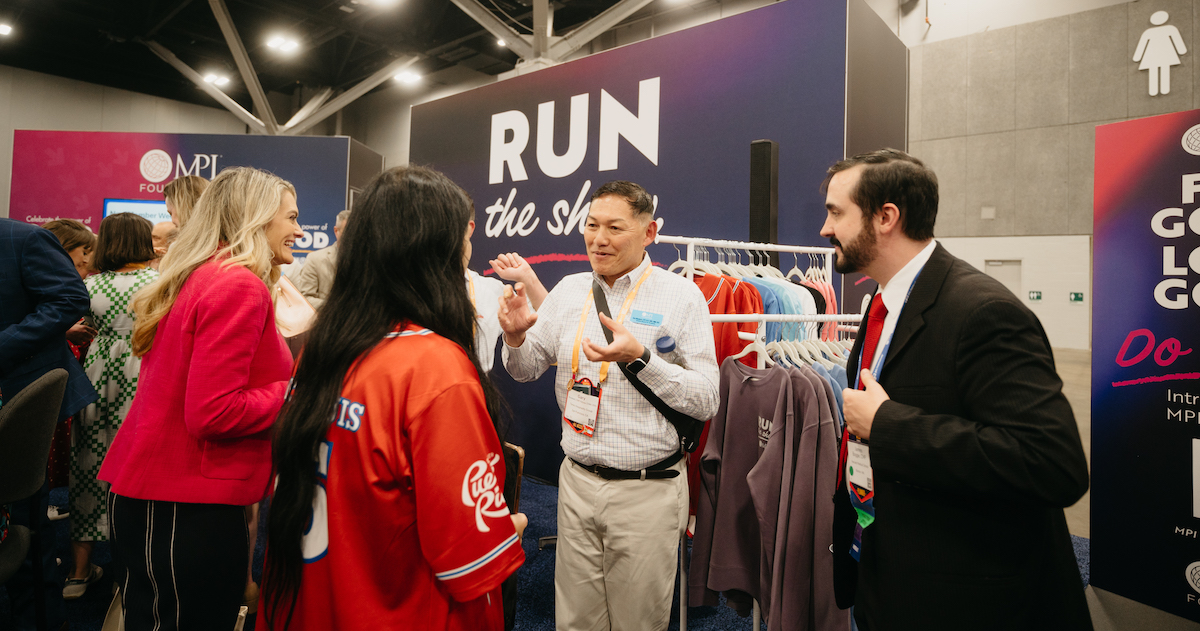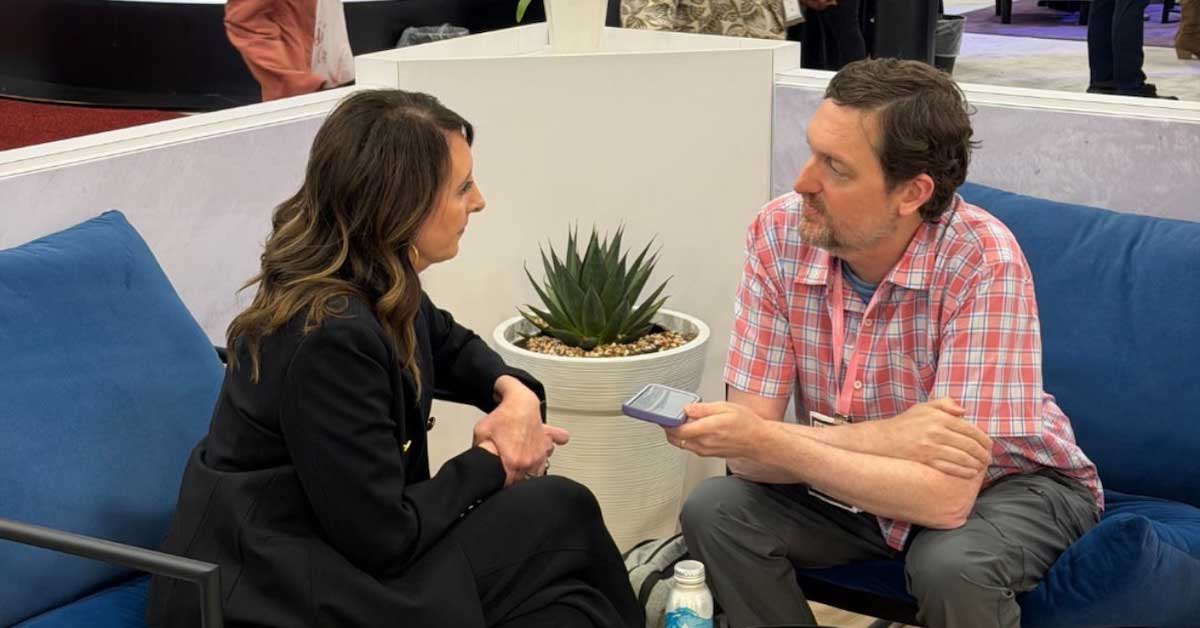This story is part of a special section from The Meeting Professional, brought to you by 
For all of its myriad benefits, digital marketing for attendee acquisition can also be extremely challenging. Measurability and choice go hand in hand with complexity and fragmentation. Nevertheless, meeting and exhibition marketers are intrigued and energized by the potential and the results of digital marketing campaigns.
Although there is widespread experimentation with channels and technology platforms, a collection of best practices and tactics is beginning to emerge. There has never been a better time to be an event marketer.
Flexibility and Speed
Digital is a more creative and flexible medium than its analog (paper) counterpart.
“With animation, video and graphics, we can have more fun and be much more timely with the message. With direct mail, it’s old news as soon as it goes to print,” says Danielle Dade, marketing communications manager at the National Association of Broadcasters (NAB).
Digital is also a very cost-effective way to test messaging, penetrate new verticals or even expand into existing verticals.
“We can launch, run and iterate a campaign and know within a very short period of time what’s resonating and what isn’t," says Kristen Ferrer, director of digital at marketing firm mdg.
Diversity and Suitability
Digital marketing is complicated.
“There’s no one strategy or tactic that works, and marketers today have to use, on average, 14 different ways to market an event, so it’s tough to gauge ROI,” says Nicole Bowman, MBA, vice president marketing and communications at the International Association of Exhibitions and Events (IAEE).
The Center for Exhibition Industry Research’s (CEIR) How to Grow Attendance Series, Report Two: Marketing Channel Mix and Other Tactics That Drive Growth affirms the challenges: “Today’s attendee marketers operate in a fragmented media landscape. Business professional media channel preferences are diverse, fragmented and personalized. One size does not fit all.”
Trends
Ferrer believes the most significant development in digital marketing isn’t so much the growing variety of channels and approaches available.
“Organizations’ willingness to experiment is the most exciting trend I’m seeing,” she says.
Direct mail works for a subset of events, and email works well for reaching individuals already on the event’s radar, but “digital is kind of the new frontier for reaching and nurturing audiences. For clients to come to us with an open mind and willingness to try different approaches is something new,” Ferrer explains.
Matt Logan, senior vice president of strategic marketing strategy for Reed Exhibitions, believes the key trend that is impacting how his organization engages with customers is personalization.
“Outside of the B2B environment our customers are everyday consumers, and they’ve become accustomed to new technologies, platforms and information that is in many ways designed for them and their specific needs and desires,” he says. “They carry those same expectations when we are creating experiences or engaging with them in their day-to-day business lives. The idea of leveraging the digital space to create customized and personal experiences is not only the way we need to move forward but is also what our customers have come to expect.”
While CEIR’s How to Grow Attendance Series identifies 14 channels marketers use with success, several rank at the top of the list.
“Strategically marketing to [the house] list via email is apt to pay the highest dividends in driving growth, along with direct mailing to this list where emails are not provided,” the report states. “Strategic use of an event’s website landing pages, ideally pointing a prospect to microsite landing pages, is the next most effective attendee growth tactic. Social media, to be effective, entails serving up content that resonates with different audiences; use of social media influencers is also a practice engaged in by a majority of marketers.”
The report also mentions search engine marketing tactics and ad retargeting as popular.
Applying a Strategy
It’s not just the channels that make attendee acquisition campaigns effective—it’s a strategic approach to timing, targeting and messaging.
“The way I get my head around [attendee marketing] for IAEE’s Expo! Expo! is to look at all the tools that I have, all my value propositions for all the different target groups and how they overlap and diverge from each other,” Bowman says.
It helps that data-analysis firm Bear Analytics examined attendee acquisition data from the past five years and provided IAEE with insight into registration patterns year over year.
“There’s no sense in sending somebody an email if they’re not going to do anything with it,” Bowman says.
NAB marketers address the challenge of multiple, diverse digital channels with a 360-degree marketing approach. It addresses the digital landscape more holistically by communicating a consistent message across the entire marketing channel mix.
“If we send out an email, we have supporting ads running through Feathr, our ad retargeting platform, or running on social media through ads or organic posts, and do the same if it’s direct mail,” says Donna Page, senior director, convention marketing at NAB. “So if an attendee receives the message in a format that they don’t necessarily connect with us on, we’re still checking all the other boxes to try and reach them.”
Although events and resources are different for every client, when mdg’s Ferrer thinks about applying digital marketing to a client’s attendee acquisition strategy, she considers a “trifecta” of tactics. Paid advertising on social media and search engines such as Google and Bing addresses prospects at the top of the marketing and sales funnel. Ad retargeting helps nurture them beyond awareness and closer to registering. And email is another channel worthy of consideration, she says, “because it’s such a low-cost, high-ROI channel, and when people make the conscious decision to give an email address, they are truly interested.”
The days of managing a “digital” program or initiative from a marketing perspective are essentially over, says Reed Exhibitions’ Logan. Marketers are being tasked with creating a multi-channel marketing strategy driven primarily by digital initiatives and supported by other key marketing programs.
“Too often we assume more complex digital programs can be executed on the side of someone’s desk or packaged into the responsibilities of those that may not have specific expertise and understanding to execute at a high level,” he explains.
Logan espouses having a clear set of goals on the front end of the program and an even clearer set of metrics on the back end to measure the success.
Budgeting for Digital
Budgets help dictate marketing channels.
“The digital world is becoming noisier and more expensive. We could easily spread ourselves and our marketing dollars way too thin,” says Rebecca Griebe, senior manager, marketing and creative services at NACE International.
Griebe makes channel decisions based on the projected revenue from each event. For smaller conferences, she supports local word-of-mouth campaigns by distributing toolkits containing handouts, copy for social media posts and website URLs to in-market experts. She also designs email campaigns that drive prospects to the conference website, triggering an ad retargeting platform that delivers banner ads online and on social media sites to reinforce specific calls to action. For larger conferences with a bigger budget for digital marketing, she adds other channels into the mix.
“For the U.S. market we capitalize on LinkedIn to drive people to our website and it’s where we are finding the most success,” Griebe says. “We do LinkedIn advertising and have tested direct messaging.”
For international events, they work with local partners to develop campaigns and content for channels such as WeChat (messaging, social media and mobile payments) and Baidu (similar to Google) in China.
Retargeting Ads Online and On Social Media
Sue McCart, president of HFI Event Services, produces the NECA Show for the National Electrical Contractors Association. The association recently kicked off a six-week ad retargeting campaign, which, if successful, it hopes to deploy year round for the organization’s 50 meetings. The campaign involves the group’s Electrical Contractor magazine (ecmag.com), which gets around 120,000 unique visitors per month, as well as its members-only website and convention website. When visitors come to any of the sites, they will be served ads online and on Facebook with offers for free admission to the show, invitations to join the association or register for the paid conference.
“We’re excited about it, but we’re just dipping our toe in the water,” McCart admits.
Taking Email to the Next Level
Success using email requires more than blasting out a generic message. It involves understanding who is on the list, why they are there and the prospective attendees’ past behavior or lack of behavior, mdg’s Ferrer says. Strategic email marketing necessitates “breaking down the list into highly intentional segments based on anything from vertical to geography to past behavior, job titles or even job levels and communicating in such a personal way it shows that as an organization you are paying attention and you truly care about their successes.”
Marketing automation platforms have helped marketers organize email marketing, as well as perform analyses that improve the effectiveness of the campaigns. IAEE’s Bowman uses Informz (a Higher Logic company) to look for behaviors such as desktop versus mobile opens, time-of-day opens and opens resulting from A/B testing of the subject lines and bodies of emails. She has tried multiple links and one link, settling on the latter for most emails she sends.
“We consider many factors when we send email,” she says. “We’re always experimenting with ways to convince readers to open our emails and follow through on the calls to action. The subject line is always the biggest challenge.”
Leveraging Search Engines
While paid search engine advertising has a significant role to play in acquiring attendees as the show cycle progresses, search engine optimization—tactics for moving a website URL higher up in search engine rankings organically—brings prospects to the event website year round.
“At the end of the day, when you turn off the dollars going into that machine, you also turn off traffic and conversions,” Ferrer says. “Search engine optimization and using the same website URL year over year keeps a website productive. It’s a best practice.”
Optimizing a website is a full-time job. It requires identifying the keywords and search terms people use to find the site, placing content on the site that answers the questions attendees have and making sure the site is technically sound so it can be crawled and indexed.
“At the end of the day, the content we’re producing must be uniquely valuable to our audience,” Ferrer explains.
Moreover, because many event websites don’t include content other than show-specific sales copy, organizers have to make an effort to produce content—blogs, speaker interviews and videos, for example—that attracts search engines and attendees.
Working with an Agency
Marketing agencies can provide organizers with significant benefits. By working with multiple clients, they have insight into which digital approaches work. Ferrer says mdg also brings in skill sets that are very technical.
“Not every organization or team can afford to have a search specialist, content strategist, videographer or data analyst,” she says.
Agencies such as mdg have access to more technology.
“Because we’re sharing the cost of these tools across many customers, we can make opportunities available to organizations that otherwise wouldn’t be able to access them due to budget constraints,” she adds.
Plus, the idea that agencies are expensive and require long-term commitments is a myth, Ferrer explains.
“Most of the time we’re working on six- or nine-month show cycles, so it’s project-based work and not endless retainers,” she says.
The Digital Road Ahead
The future of digital marketing for attendee acquisition looks brilliant. In recent years, new attendee acquisition technologies for ad retargeting, social referral marketing, digital influencer campaigns, exhibitor invitations, marketing automation and event data management have emerged. Even with its complexity, digital marketing has become one of the most rewarding aspects of the job for marketers such as Bowman.
“It’s a great time to be a marketer,” she says. “Twenty years ago, marketing was always one of the first departments to be downsized. Now, it’s essential to the function of any organization.”







